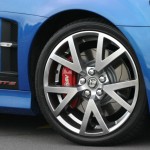
Despite having many more tyres in contact with the road, the additional weight of an HGV means that stopping distances (including reaction time) can be 50% further than a car in similar conditions. On a dry road, a car will…
ABS is a system which prevents the wheels from locking, or stopping, in order to avoid a skid while braking. It doesn’t stop the vehicle from sliding sideways but, assuming that it is stopping in roughly a straight line, will…

Any brakes will overheat if you use them for a sustained period of time. This causes partial or complete loss of braking power which can leave you in a dangerous situation. What happens when you brake? Let’s assume you have…
The distance it takes a vehicle to come to a complete stop when the brakes are applied fully is called the stopping distance or braking distance. In an ideal world you will have plenty of time to check your mirrors…